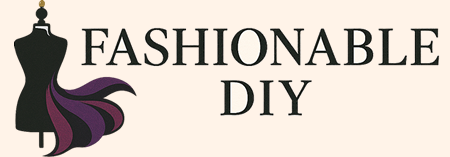Create Your Own Color Palette: Personalized Fashion
Building a personal color palette is an empowering way to express individual style and creativity. By learning to choose colors that complement personal features and preferences, anyone can transform their wardrobe into a reflection of their unique personality. A personalized palette not only enhances one’s style but also boosts confidence and makes dressing easier and more enjoyable.
Creating a color palette involves understanding color theory and recognizing which shades enhance natural features. By identifying skin tone, hair, and eye color, individuals can select hues that harmonize beautifully with their appearance. This personalized approach helps in crafting an outfit that stands out in a crowd while staying true to one’s identity.
The process includes practical steps like exploring different colors, experimenting with combinations, and finding what feels right. Whether someone is dressing for a casual day out or a formal event, the right color choices can make all the difference. This freedom to explore and refine one’s style leads to a wardrobe that not only looks good but also feels right.
Understanding Color Theory
Color theory provides the foundation for creating cohesive and appealing fashion statements. This includes grasping the significance of each color category and their role in forming a harmonious color palette.
Primary Colors
Primary colors form the basic building blocks of color theory. These are red, blue, and yellow. They are unique because they cannot be created by mixing other colors. In fashion, these colors can be the cornerstone of a versatile color palette.
Designers often start with one of these hues as a focal point. Red can evoke passion and energy, blue offers calmness and stability, while yellow presents brightness and cheerfulness. By understanding their innate qualities, one can craft an intentional and impactful visual aesthetic.
Secondary Colors
Secondary colors emerge from blending primary colors. These are green, orange, and purple. Each arises by mixing two primary colors: green from blue and yellow, orange from red and yellow, and purple from red and blue.
In fashion design, secondary colors bring a fresh angle to a palette. Green symbolizes nature and balance, orange captures vitality and creativity, while purple suggests luxury and mystery. Utilizing secondary colors helps enrich designs and makes fashion visually diverse.
Tertiary Colors
Tertiary colors are formed by combining a primary color with a secondary color, leading to hues like red-orange, blue-green, and yellow-green. They introduce nuance and variation to a color palette, adding depth and sophistication to fashion designs.
In the world of fashion, these shades allow for subtle transitions and intricate designs. Red-orange can add warmth and excitement, blue-green provides a refreshing look, and yellow-green offers a vibrant and lively feel. Through these colors, outfits can achieve greater complexity and personalized flair.
The Role of Personal Style
A personal style informs the selection of colors, creating a unique color palette that aligns with individual preferences and themes. By understanding the essence of one’s style, better choices can be made to reflect personality.
Identifying Your Style
Recognizing personal style is the first step in creating a fitting color palette. It involves examining existing wardrobe preferences, favorite pieces, and recurring themes in one’s clothing. This awareness can be achieved by asking questions like: Do they prefer classic, contemporary, or eclectic styles? Do they lean towards minimalism or bold patterns? Understanding these facets helps in pinpointing a consistent style foundation.
Colors that dominate in their current clothing selections often can highlight the preferred themes. These colors or shades might indicate hidden inclinations toward specific tones or combinations. Observing these details helps in clarifying choices and narrowing down the dominant style features, paving the way to a personalized and reflective palette. Adopting a few symbolic colors that represent these themes strengthens personal style statements.



